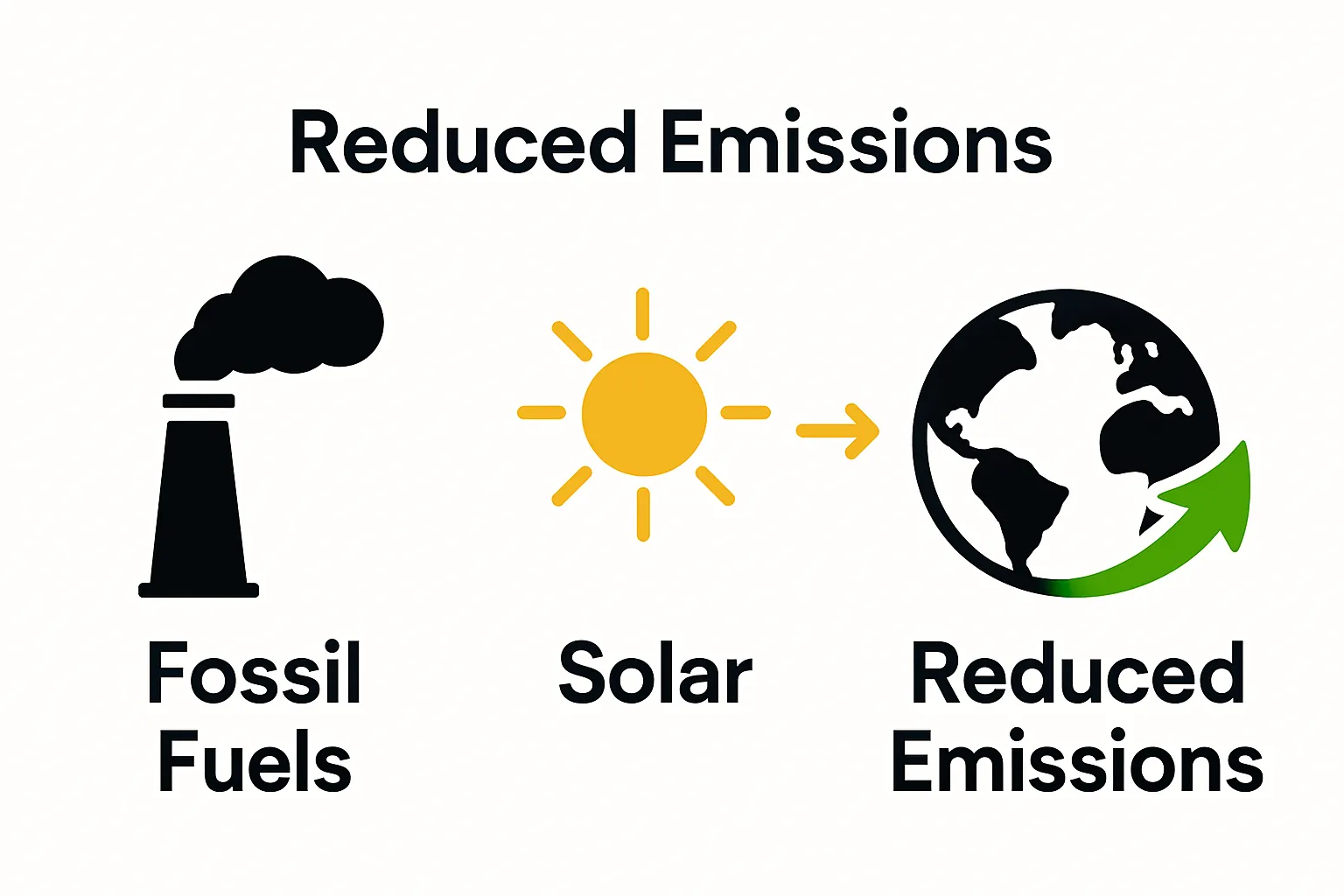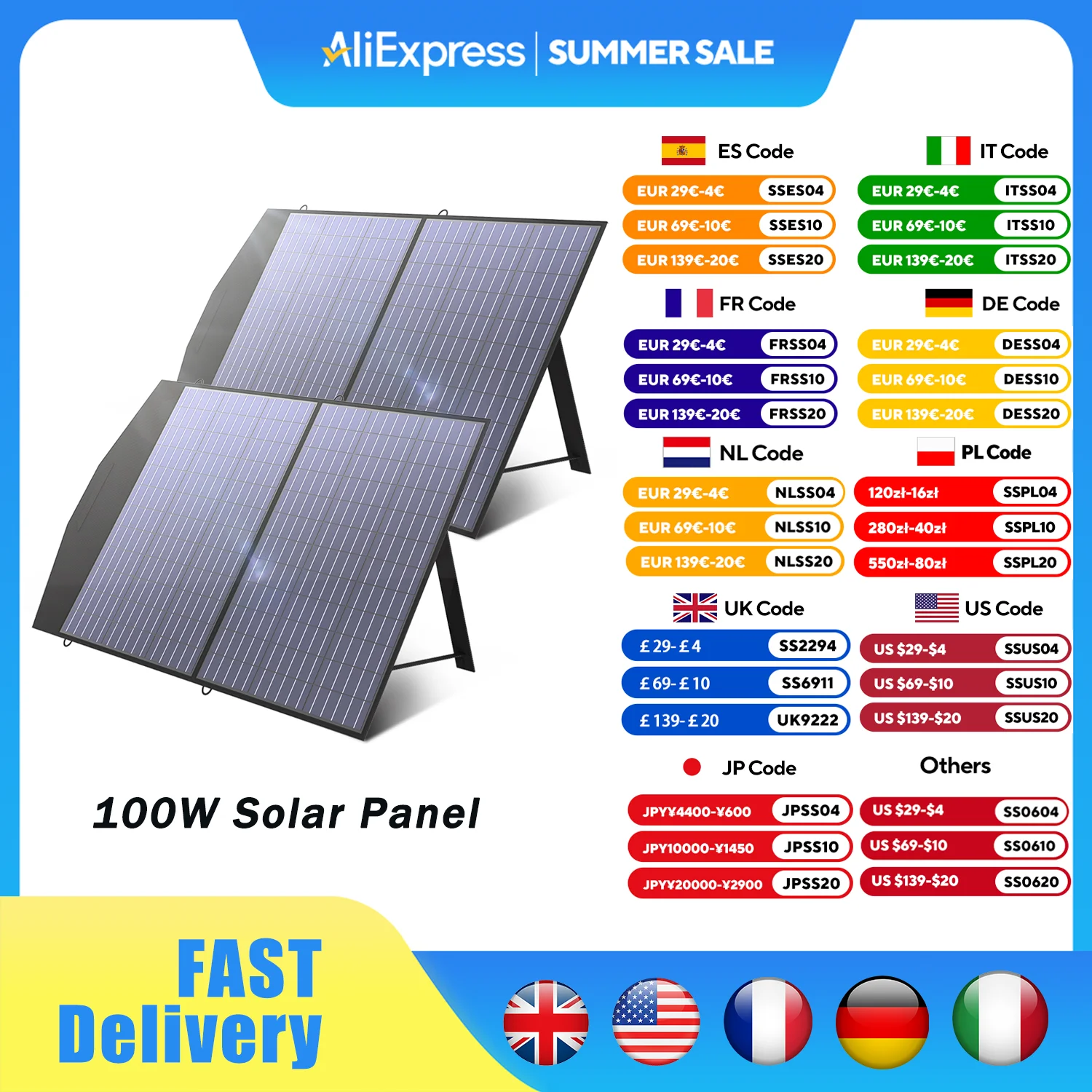




Solar panels are changing the way homes and businesses get electricity, with modern panels now converting up to 22 percent of sunlight into usable power. Most people think the science behind this is complicated or out of reach. It turns out the basics are surprisingly simple and even a little mind-blowing once you see how sunlight becomes electricity right on your rooftop.
Table of Contents
- Defining Solar Panels: What Are They?
- The Importance of Solar Energy in Today’s World
- How Solar Panels Generate Electricity: The Science Explained
- Key Components of Solar Panel Systems and Their Functions
- Real-World Applications and Benefits of Solar Panels
Quick Summary
| Takeaway | Explanation |
|---|---|
| Solar panels convert sunlight to electricity. | They utilize the photovoltaic effect to transform solar energy into usable electrical power. |
| Solar technology reduces environmental impact. | The transition to solar energy leads to lower carbon emissions and less water use compared to fossil fuels. |
| Solar panels enhance energy independence. | By generating their own electricity, homeowners and businesses can decrease reliance on traditional power grids. |
| Investing in solar boosts property value. | Solar installations can increase marketability and overall value of residential and commercial properties. |
| Solar energy promotes global access to electricity. | Developing regions can utilize solar technology to provide electricity in areas lacking traditional grid infrastructure. |
Defining Solar Panels: What Are They?
Solar panels represent a groundbreaking renewable energy technology transforming how we generate electricity. At their core, these innovative devices harness sunlight and convert it directly into electrical power through a sophisticated process known as the photovoltaic effect. Photovoltaic technology has emerged as a critical solution for sustainable energy production, offering an environmentally friendly alternative to traditional fossil fuel methods.
The Basic Composition of Solar Panels
Solar panels are intricate systems composed of numerous solar cells, primarily constructed from semiconducting materials like silicon. These cells function as the fundamental building blocks of solar energy generation. When sunlight strikes these specialized cells, they trigger an electronic process that generates electrical current. Each solar cell contains two layers of silicon with different electrical properties designed to create an electric field.
The primary components of a solar panel include:
- Photovoltaic cells: The core elements that convert sunlight into electricity
- Protective glass: Shields the cells from environmental damage
- Aluminum frame: Provides structural support and stability
- Backsheet: Prevents moisture penetration and electrical insulation
How Solar Panels Generate Electricity
The mechanism behind solar panel electricity generation is both elegant and complex. When photons from sunlight interact with the semiconductor material, they knock electrons loose from their atomic orbits. These liberated electrons create an electric current that can be captured and transformed into usable power. Research from the National Renewable Energy Laboratory demonstrates that modern solar panels can convert approximately 15 to 22 percent of received solar energy into electricity, with advanced technologies continuously improving efficiency.
Understanding solar panels goes beyond their technical specifications. Read more about the latest solar panel technologies to explore how this renewable energy solution is rapidly evolving and becoming increasingly accessible for residential and commercial applications.
The Importance of Solar Energy in Today’s World
Solar energy represents a critical pathway towards addressing global environmental challenges and transforming our approach to sustainable power generation. As traditional fossil fuel resources become increasingly scarce and environmentally damaging, solar technology emerges as a powerful alternative that can fundamentally reshape our energy infrastructure. International renewable energy trends demonstrate a significant global shift towards solar power as a viable and necessary energy solution.
Environmental and Economic Benefits
The transition to solar energy delivers multifaceted advantages that extend far beyond simple electricity generation. By reducing carbon emissions and minimizing environmental degradation, solar technology provides a cleaner, more sustainable energy pathway.
 The economic implications are equally compelling, with solar investments creating new job markets and driving technological innovation across multiple sectors.
The economic implications are equally compelling, with solar investments creating new job markets and driving technological innovation across multiple sectors.
Key environmental benefits include:
- Dramatically reduced greenhouse gas emissions
- Minimal water consumption compared to traditional power generation
- Reduced dependence on finite fossil fuel resources
- Decreased air and water pollution
Global Energy Security and Accessibility
Solar energy plays a transformative role in enhancing global energy security. Developing nations can leverage solar technology to overcome infrastructure limitations and provide electricity to remote communities. Decentralized solar systems enable regions without traditional power grids to access reliable electricity, promoting economic development and improving quality of life. Read more about emerging solar technologies that are expanding energy accessibility worldwide.
The scalability of solar technology means that countries can reduce their reliance on imported energy, stabilize electricity costs, and create more resilient national energy systems.
This table compares the major environmental and economic benefits of solar energy versus traditional fossil fuels based on points mentioned throughout the article.
| Benefit | Solar Energy | Traditional Fossil Fuels |
|---|---|---|
| Greenhouse Gas Emissions | Significantly reduced | High emissions |
| Water Consumption | Minimal | High |
| Resource Availability | Renewable and abundant | Finite and depleting |
| Air and Water Pollution | Minimal | Significant |
| Job Creation/Innovation | Drives new job markets and tech innovation | Limited compared to renewables |
How Solar Panels Generate Electricity: The Science Explained
The process of converting sunlight into electricity through solar panels involves a fascinating interplay of quantum physics and semiconductor technology. At its essence, solar panels transform solar radiation into electrical energy through a precise and sophisticated mechanism that harnesses the photovoltaic effect. Quantum mechanics research reveals the intricate ways electrons interact with photons, making solar energy conversion possible.
The Photovoltaic Effect: Electron Liberation
When sunlight strikes a solar panel, an extraordinary transformation occurs at the atomic level. Photons from sunlight carry energy that interacts with semiconductor materials, typically silicon, causing electrons to become excited and break free from their normal atomic configurations. This electron liberation creates an electric field within the solar cell, generating a flow of electrical current.
Key aspects of the electron liberation process include:
- Photon absorption: Solar radiation penetrates the semiconductor layer
- Electron excitation: Photons transfer energy to electrons
- Charge separation: Electrons are knocked loose from their atomic positions
- Current generation: Freed electrons create an electrical current
Converting Solar Energy into Usable Power
The electrical current generated by solar cells is initially in direct current (DC) form, which requires conversion to alternating current (AC) for household and industrial use. Inverter technology plays a crucial role in this transformation, enabling solar-generated electricity to seamlessly integrate with existing power grids. Learn more about solar cell technology and how these advanced systems continue to evolve and improve electrical energy conversion efficiency.
Modern solar panels achieve remarkable efficiency by utilizing advanced semiconductor designs and innovative materials that maximize electron movement and minimize energy loss. The continuous refinement of photovoltaic technology promises even more sophisticated methods of harnessing solar energy in the future.
Key Components of Solar Panel Systems and Their Functions
A solar panel system represents a complex network of interconnected components working together to transform sunlight into usable electrical energy. Understanding each element’s specific role is crucial for comprehending how these innovative systems generate and distribute renewable power. Renewable energy technologies continue to evolve, making solar panel systems increasingly sophisticated and efficient.
Essential Hardware Components
The fundamental architecture of a solar panel system comprises several critical hardware elements that collaborate to capture, convert, and distribute solar energy. Each component plays a unique and indispensable role in the overall energy generation process.
Key hardware components include:
- Solar panels: Primary energy capture devices
- Inverters: Convert direct current to alternating current
- Mounting systems: Provide structural support and optimal panel positioning
- Charge controllers: Regulate electricity flow and prevent battery overcharging
- Battery storage systems: Store excess generated energy for later use
Electrical System Integration
The electrical infrastructure connecting solar panel components requires precise engineering to ensure optimal performance and safety. Wiring, connectors, and grounding systems must meet strict electrical standards to prevent energy loss and minimize potential safety risks. Inverter technology plays a particularly crucial role in transforming the direct current generated by solar panels into alternating current compatible with household electrical systems. Learn more about setting up solar panels to understand the intricate details of system design and installation.
Modern solar panel systems incorporate advanced monitoring technologies that allow real-time tracking of energy production, consumption, and system performance.
Below is a table summarizing the key components of a solar panel system and their primary functions for easier reference.
| Component | Function |
|---|---|
| Solar panels | Capture sunlight and convert it into electricity |
| Inverters | Transform direct current (DC) to alternating current (AC) |
| Mounting systems | Secure panels and position them for optimal sunlight |
| Charge controllers | Regulate electricity flow, protect batteries |
| Battery storage systems | Store excess energy for later use |
Real-World Applications and Benefits of Solar Panels
Solar panel technology has transcended theoretical potential, emerging as a practical solution across residential, commercial, and industrial landscapes. The versatility of solar energy extends far beyond simple electricity generation, offering transformative benefits for individuals, businesses, and entire communities. Research from renewable energy experts confirms the expanding role of solar technology in addressing global energy challenges.
Residential and Commercial Energy Solutions
Homeowners and businesses are increasingly adopting solar panels as a strategic approach to energy management. Solar installations provide a reliable method for reducing electricity costs, decreasing carbon footprints, and achieving greater energy independence. The financial implications are significant, with solar panels offering long-term economic advantages that extend well beyond initial installation investments.

Key benefits for residential and commercial applications include:
- Reduced electricity expenses: Substantial long-term cost savings
- Energy independence: Decreased reliance on traditional power grids
- Increased property value: Solar installations enhance real estate marketability
- Tax incentives: Government programs offering financial benefits for solar adoption
- Environmental conservation: Significant reduction in personal carbon emissions
Innovative Applications Across Multiple Sectors
Solar technology has expanded into diverse sectors, demonstrating remarkable adaptability. Agriculture, transportation, telecommunications, and emergency response systems are increasingly leveraging solar power to create more sustainable and resilient infrastructure. Remote locations without traditional electrical infrastructure can now access reliable power through portable and scalable solar solutions. Explore potential solar panel savings to understand the economic potential of these innovative energy systems.
The future of solar technology promises even more sophisticated applications, with ongoing research focusing on improving efficiency, reducing manufacturing costs, and developing more versatile solar capture technologies. From powering satellites to supporting agricultural irrigation systems, solar panels are revolutionizing how we conceptualize and utilize renewable energy resources.
Take the Next Step Toward Smart Solar Choices
Understanding the real impact of solar panels is more than just learning about how sunlight turns into electricity. Navigating technical details, efficiency ratings, and upfront investment can feel overwhelming. Maybe you want to lower your energy bills or make a greener decision for your home, but figuring out which system truly matches your needs can be stressful. This is where many readers pause, unsure what action to take next or how to spot trustworthy information.
Discover expert advice with our Tips And Techniques section, where we explain simple ways to maximize your solar panel investment. You will find straightforward guides and practical solutions that help you overcome the typical confusion about panel selection, installation, and energy savings.

Do not leave your solar journey unfinished. Visit HTEXS for unbiased reviews and in-depth breakdowns, all crafted to help you become confident in your solar decisions. Start exploring today and unlock the savings and sustainability you have been searching for.
Frequently Asked Questions
What are solar panels and how do they work?
Solar panels are devices that convert sunlight into electrical power using a process called the photovoltaic effect. They are made up of multiple solar cells, typically constructed from silicon, which generate electricity when exposed to sunlight.
What are the main components of a solar panel system?
A solar panel system consists of solar panels, inverters (which convert direct current to alternating current), mounting systems, charge controllers, and battery storage systems, all working together to capture and distribute solar energy.
What are the environmental benefits of using solar energy?
Using solar energy significantly reduces greenhouse gas emissions, decreases water consumption compared to traditional power sources, reduces air and water pollution, and lessens dependence on finite fossil fuel resources.
How does solar technology contribute to energy independence?
Solar technology allows individuals and businesses to generate their own electricity, reducing reliance on traditional power grids. This independence helps stabilize energy costs and promotes a more resilient energy infrastructure.
Recommended
- Understanding What is the Latest Solar Panel Technology – htexs.com
- How to Set Up Solar Panels for Your Home: A Step-by-Step Guide – htexs.com
- 8 Essential Solar Energy Tips for 2025 – htexs.com
- Understanding Solar Cell Technology: How It Works – htexs.com









